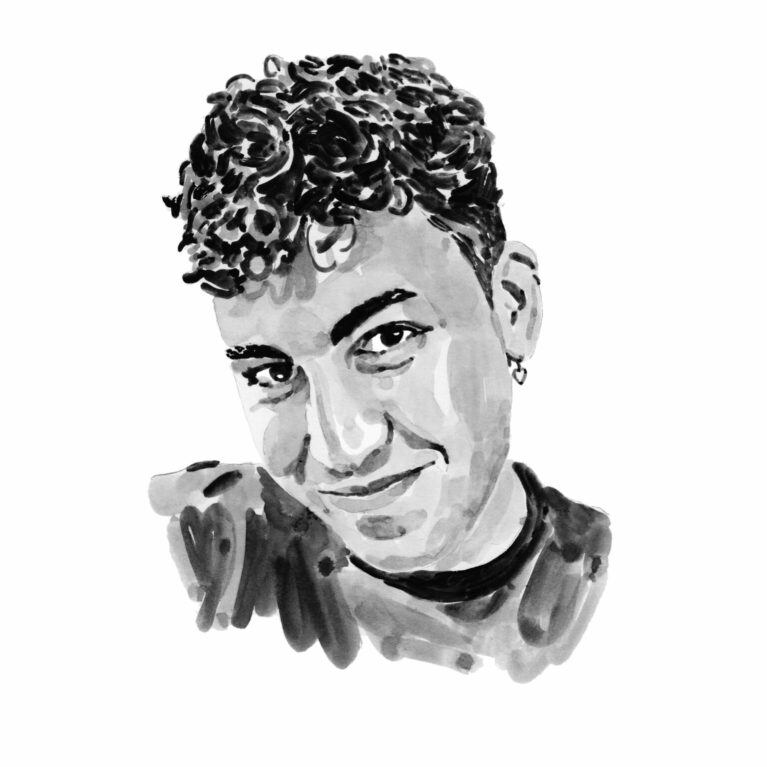David Ruiz García

Who I am
Raised in a Mediterranean village, I embraced the water as a swimmer and a chaser of frogs by the river and crabs along the rocky shores. My childhood ambition was to be a herpetologist, until Australia’s Pacific shores introduced me to the elegance of stingrays and the charm of sharks – and shifted my path. Returning to the Mediterranean, I felt its uniqueness and made a promise to protect this sea that I consider my home. To start this journey, having surrounded myself with good advisers, I developed my own idea for a PhD. This led me to embark on a solitary expedition aboard commercial bottom trawlers in the western Spanish Mediterranean to understand the interaction between chondrichthyans and fisheries. The time I spent with fishers revealed to me the vital role of the human dimension in conservation. Simultaneously, stunning creatures coming from the depths of the sea caught my attention and interest. When I realised how little attention was paid to these ‘ugly species’ across social, research and management spheres, I knew I’d found where I could make a difference. My main motivation is to promote a movement to better understand and protect these often misunderstood and overlooked species. In part, this echoes the promise I made to myself beside the sea, a promise to safeguard the treasures that inspired my childhood curiosity and forged a sense of belonging within me. For this reason, I am now embarking on another journey, back to the Pacific Ocean to develop new tools and gather more knowledge about the interaction between deep-sea species and fisheries.
Where I work
The isolation of New Zealand’s location in the south-western Pacific Ocean has led to the emergence of a diverse and distinctive marine ecosystem. The country’s waters are a hotspot of chondrichthyans, hosting 112 species, of which approximately 20% are found nowhere else in the world. New Zealand’s marine environment includes a diverse range of habitats, from shallow coastal waters to deep-sea trenches. This range offers numerous ecological niches, allowing for adaptations that culminate in distinctive forms and behaviours, resulting in a variety of endemic chondrichthyan species.
New Zealand’s commitment to marine research and conservation has led to a better understanding of its chondrichthyan populations. Having acquired global recognition for this work, the country occupies a leading position due to its state-of-the-art fisheries-monitoring initiatives and the use of advanced technology on its research vessels. By pioneering innovative technological and statistical approaches, it has spearheaded the evaluation of marine ecosystem dynamics.
New Zealand has one of the largest exclusive economic zones in the world and important large-scale industrial fisheries operate in these waters. They target mainly hoki, but deep-sea chondrichthyans are frequently taken as bycatch and usually discarded. But little is known about how many of them die when captured and subsequently released. To address this knowledge gap, we need to develop a comprehensive toolkit that will unravel the effect of capture on the health and survival prospects of deep-sea species. By pursuing this objective, we can find ways to mitigate the impact of fisheries and contribute to New Zealand being a refuge for threatened deep-sea chondrichthyans, while providing tools for other researchers to do the same in their regions.
What I do
Over the past years I have spent most my time either on commercial fishing vessels measuring sharks, rays and chimaeras (and returning home with a unique perfume) or creating databases and code on my computer to understand what is going on with such species. I have specialised in distribution models, data-poor stock assessments and post-capture health evaluations. This project aims to shed light on the effect of fishing capture on deep-sea species and to standardise a toolkit that can be used by the scientific community and managers anywhere in the world, for any species and in any fishing context. To achieve this, I will spend a month aboard a research trawl survey vessel off New Zealand and will collect as much information as possible about the post-capture health of chondrichthyans. I will evaluate the physical condition, behavioural activity and the physiological status of as many specimens as possible during that time and will work tirelessly to monitor the status of the specimens throughout the voyage. This will entail both getting dirty and looking at the computer screen for hours, but I will put all my effort into making sure that the results help to bring about change in the conservation of these often misunderstood species and improving their welfare.
